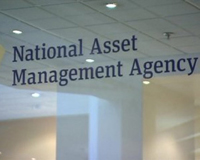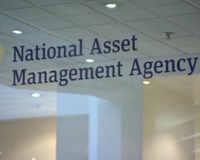 It is now more than five years since Development Securities started to work with Irish lenders and the National Asset Management Agency as they began deleveraging following the 2008 crisis.
It is now more than five years since Development Securities started to work with Irish lenders and the National Asset Management Agency as they began deleveraging following the 2008 crisis.
Irish lenders had been among the most active in the UK in the lead-up to the crash and by 2008 had built up significant portfolios of UK assets.
e took the view that they would not be forced sellers. Indeed the very rationale of Nama was to protect the Irish banks and financial system from further losses from fire-sales. As we began to work with them and their borrowers on a consensual basis it became clear that Ireland itself offered interesting opportunities.
The crisis had hit Ireland’s property industry particularly hard. Having peaked at an unsustainable level of around 25% of national output, the Irish construction industry collapsed to 5%, well below a normalised requirement of 12-15%. We therefore saw two opportunities: asset acquisitions as lenders deleveraged, and new development as the supply side had ceased to function.
Dublin was our first venture outside the UK and a relatively easy one to make. Its legal and property systems are similar to ours and there is a high degree of integration between both economies. The country is an export powerhouse, primarily for IT, financial services and Big Pharma, and the Irish have a stellar record of capturing foreign direct investment into Europe. A highly educated, English-speaking workforce, low tax rates and an EU presence mean Ireland is an enduringly attractive business location. Our strategy was to treat Ireland as a regional play within our overall strategy.
The country’s woes were widely thought to lie in an overheating property market and associated banking weakness. Large asset price rises combined with oversupply were followed by spectacular asset price falls and undersupply. The crash produced a deep recession, but the Irish set about putting their house in order. Ireland did not suffer the political and cultural upheaval that other assisted EU countries would see. The economy began to heal and, while much pain remained, it was felt most by those previously overexposed to the property sector. Last year saw asset price recovery in full swing, while accumulated shortages of new commercial and residential accommodation began to be very pronounced.
But entering a new market is always a challenge. Three factors assisted DevSec. First, a proven record of working with property people made us attractive to Irish developers seeking to re-capitalise or rebuild. Second, we made it clear that we were in for the long haul and hoped to be buying and building once the feeding frenzy passed. Finally, our lack of legacy issues helped, especially when it came to Nama.
This strategy has enabled DevSec to be the first major UK investor to start buying in Ireland post-crash with five acquisitions completed.
Many would deem changing strategy and entering a new market in the midst of a recession risky. However, the ashes of the Celtic Tiger are starting to produce a phoenix. The 12-month return for Irish commercial property was 36.6% in September, higher than that for the UK. And rental growth in Ireland’s commercial sector reached 20% in 2014, the highest growth rate in Europe.
Matthew Weiner is executive director of Development Securities











